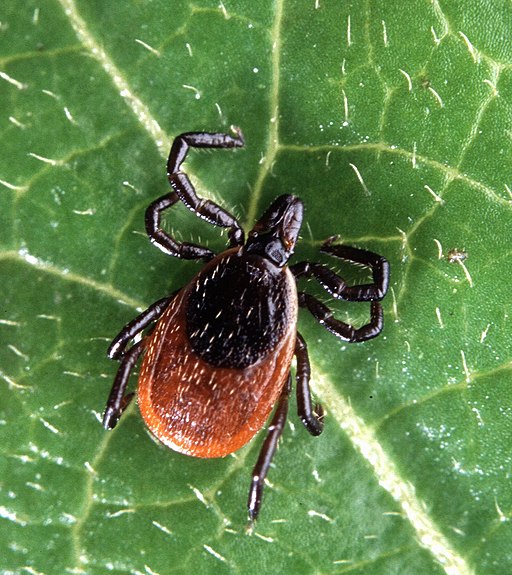The Deer Tick

Deer tick. Photo by Scott Bauer. Public Domain.
Humans are known as “accidental hosts,” but the results of these tick bites are anything but mild. The deer tick can transmit a range of disease, such as Lyme disease.
HOW TO IDENTIFY DEER TICKS
Deer ticks can be distinguished from American dog ticks because they are usually about half their size. These ticks are brown but can also be red after feedings. They are roughly three to five millimeters long, but engorged females can be up to twice that size.
These ticks have flattened bodies and eight legs. Nymphs are about a millimeter long, also with eight legs, while larvae are about the size of a poppy seed and have only six legs.
Appearance, Behavior, and Signs
Deer ticks are most commonly found near wooded areas, especially those with large field mice and deer populations.
Deer can bring these ticks onto people’s lawns when they venture out of the woods and onto the lawns, making this species problematic in all areas, including residential.
These ticks are found all throughout the United States, but most commonly in the northeastern, mid-Atlantic, and southeastern portions of the country.


